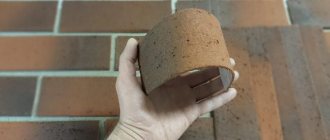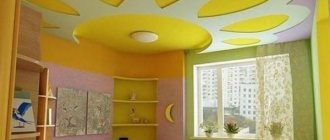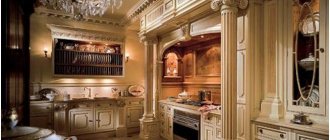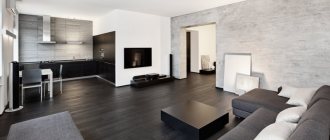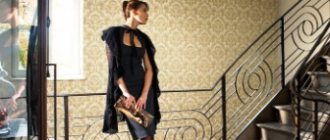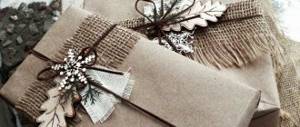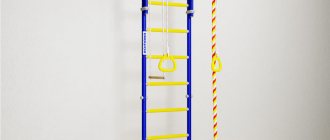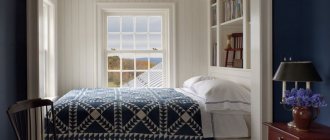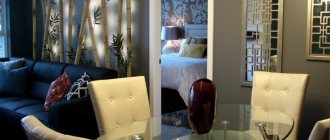The appearance of a baby in a family is a happy and joyful event, however, it is associated with endless worries and requires thorough preparation. Many parents already purchase everything necessary for a newborn in advance: a stroller, a crib, clothes, forgetting about such a necessary thing as a changing table.
It would seem that there is no need for it, because you can swaddle a baby anywhere, and there is no need for extra expenses. This is only partly true: large financial investments are really not needed if you know how to make a changing table with your own hands.
Benefits of using changing tables
You have to change clothes for an infant very often - at least five to seven times a day. Not every mother can do this while bending over the sofa - often after childbirth, temporary back problems arise when the load on the spine is undesirable. A specially equipped table in this case is a real salvation; its height (80-100 cm) allows you to avoid these overloads.
Floor-standing models of tables for changing a baby include not only a diaper, but also a number of drawers or shelves to accommodate all the things necessary for this process: nappies, diapers, baby vests and hygiene products.
Having these items at arm's length is not only convenient, but also advisable from the point of view of the baby's safety - he will not have to be left unattended while the necessary things are collected around the house.
Additional safety, unlike a regular table, is provided by the sides of the changing table, which run along its three sides and prevent the child from accidentally falling.
Convenience is the main criterion for almost any furniture, and the changing table fully corresponds to it. It is compact (you can choose a model that matches the size of the room) and multifunctional, very convenient for therapeutic or preventive exercises and massage.
You can use this design for quite a long time (up to a year), and then, if desired, convert it into a regular chest of drawers.
Types of changing chests
Manufacturers produce quite a lot of modifications of chests of drawers:
- with a removable table, which, after the child grows up, can be disassembled;
- with a hinged lid;
- a chest of drawers that is part of a children's bed. It is also equipped with an easily removable changing cover and two or three small drawers;
- a chest of drawers that in the future can be transformed into a chest of drawers and a table for a child.
Types of changing tables
Modern designs of changing devices are not limited to the standard classic chest of drawers with three sides, but even this model comes in different types. For example, there may be a larger number of sides or a changing station expanded due to the folding surface.
Today, not only floor tables are available for sale, but also hanging and portable tables.
Suspension
The table is attached to a vertical surface and therefore does not take up much space. Like any other changing device, it is equipped with sides and a soft surface. There may be pockets at the bottom for storing diapers and other small items.
When installing a wall-mounted changing table, special attention should be paid to the reliability of the fastenings.
Folding
This is a type of hanging table, but with the ability to remove it by connecting it to a wall panel using a mechanism equipped with gas lifts (to avoid accidental collapse or, conversely, opening).
The shelves included in the design make it even more convenient and functional. This is a very compact option, suitable not only for a nursery, but even for a bathroom.
For this model, as well as for the hanging one, the surface itself to which the structure is attached is of great importance - it must be durable and withstand the weight of the child, therefore such a table is not recommended for installation on plasterboard partitions.
Portable
It is a board with sides and a soft surface, with fastenings for stability. This option is very convenient for small apartments: the diaper is securely fixed on the backs of the crib without taking up space in the room, and is also useful if you need to go on a trip.
In addition, this is the easiest and easiest type of changing device to make yourself.
Dresser
This is a classic model with drawers and a built-in or removable soft changing board with sides. Of all the above, this is the most capacious design, but also the most voluminous, so even compact models of chests of drawers are not suitable for small spaces.
Other types of structures
A bookcase is a structure with open shelves. Due to the absence of closed drawers, it is lighter than a chest of drawers and does not visually clutter up the space.
A folding changing table makes it possible to lay out the structure. This can be attributed to both the advantages of this model and the disadvantages: if it is not needed, it is removed and does not take up space, but at the same time, it is not very convenient to constantly disassemble and reassemble it.
A transformer is a model that combines several furniture options. For example, it can be transformed after the child grows up into a desk or be combined with a crib.
The last version of the model is the most difficult to manufacture independently. If you choose this design, it is best to give preference to finished products or order it from specialists.
The superiority of a changing chest
An obvious advantage of the chest of drawers is the fact that it makes it possible to place the child on a horizontal plane that has sides that protect against falling.
Another advantage is the fact that the product is about a meter high, and when the baby is at that height, the mother will not need to bend over.
The usefulness of the chest of drawers is especially evident during massage.
In addition, putting the baby on the changing chest is much more convenient than placing him on the sofa or on the parents' bed.
A chest of drawers is also needed when the baby needs to take an air bath.
What material is it made from?
When choosing a manufacturing material, the main criterion is safety, so it must be environmentally friendly and not contain any harmful or toxic impurities. The more natural the material, the better.
Natural wood is preferable, but not every budget can withstand such a load. Therefore, you can use substitutes, such as chipboard (chipboard) or MDF (medium density fiberboard) - they will cost much less, and in terms of safety and reliability they fully comply with the standards.
It is recommended to use the same criteria when choosing coatings - paint, varnish and soft board surface.
Under no circumstances should you use paint with a toxic composition or an unpleasant odor, and the material for the changing board, including the filler, should not cause an allergic reaction.
It is best to make a soft surface from holofiber (it is hypoallergenic) and natural fabric (for the top layer).
What to consider before making a table
There is no need to rush and start assembling the chosen design as soon as such an idea appears. In order to avoid unpleasant accidents and subsequent rework, it is worth considering some points before proceeding directly to production.
Nuances:
- The table must be reliable and stable. Structural strength is one of the primary tasks facing the manufacturer. When choosing a suspended model, this concerns, first of all, the fastening mechanism.
- The dimensions of the table should facilitate a comfortable position for the baby when swaddling. If you make it yourself, you can choose the desired height of the structure and width, but it is better to make the depth standard or a little larger, but not less than 60 cm, since the baby can quickly “outgrow” the diaper.
- It is recommended to make the surface of the table soft, but at the same time, with a fairly rigid base. If you plan to sew the mattress yourself, then you need to lay an oilcloth between the outer fabric and the filling, or, even better, take a water-repellent fabric.
And, of course, we should not forget about the safety of all materials used, as well as reducing the risk of injury to the structure. To do this, sharp corners are polished, surfaces are smoothed, fasteners are recessed, and a minimum of fittings are used.
Answering buyer questions
If a family is planning to urgently buy a changing chest, in such cases it is appropriate to pay attention to the Furniprice service.
Offers from furniture manufacturers from different countries are collected here, so there will be no problems finding a suitable model. The platform provides secure conditions for cooperation between the seller and the buyer. Here users will be pleasantly surprised by the range of products, pricing policy and payment with delivery. Moreover, the resource offers new manufacturers to interact on favorable terms.
How to make a dresser table with your own hands
Making a chest of drawers yourself is not a quick process and is quite labor-intensive: to do it well, you need to have some carpentry skills.
The easiest way is to attach a changing board with sides to a regular ready-made chest of drawers and equip it with a mattress. But if you want to build a structure from scratch, you will need an additional set of tools and materials.
Required tools and materials
In addition to the selected lumber (wood, chipboard or MDF), you will need appropriate carpentry tools and additional materials, the availability and quantity of which directly depends on the appearance of the planned structure.
You will definitely need:
- jigsaw or saw for cutting out workpieces;
- sandpaper;
- Sander;
- screwdriver, screwdriver;
- self-tapping screws or self-tapping screws;
- wood primer;
- tape measure, construction rectangle, pencil;
- furniture corners;
- confirmations;
- guides for drawers (two pieces for each);
- accessories.
Preparation of blanks
First you need to make a drawing of the future chest of drawers or select and print from the Internet the model that best suits your personal preferences. The model presented below is a classic one - a chest of drawers with drawers and an extended shelf for changing.
Next, the material is cut to the dimensions specified in the drawing (they can be adjusted if necessary) and the corners are rounded. For this process, it is best to use an electric jigsaw rather than a saw, as it will not cut rounded lines neatly.
After cutting you should get the following parts:
- sides 798 x 460 cm - 2 pcs;
- back side 732 x 848 cm - 1 piece;
- bottom of boxes 790 x 448 - 4 pcs;
- chest of drawers 818 x 460 - 1 piece;
- top shelf 850 x 480 - 1 piece;
- additional shelf 850 x 283 - 1 piece;
- facades 177 x 846 - 4 pcs;
- side panels of drawers 120 x 418 - 8 pcs;
- back panels of drawers 120 x 818 - 4 pcs;
- main sides 80 x 414 - 2 pcs;
- folding sides 79 x 394 - 2 pcs;
- rear side 243 x 850 - 1 pc.
If there is an opportunity and desire, then the back panel and drawers can be made of hardboard.
Now you need to thoroughly sand the workpieces. To do this, you will need a coarse sandpaper or sanding wheel first, and a finer one for finishing.
Creating grooves
Grooves for inserting one piece into another need to be made in the side parts and in the back panel of the chest of drawers - the future tabletop will become there. To form them you will need a jigsaw or a wood saw and a chisel.
The dimensions of the groove are as follows: the width of the entrance is 1-2 mm greater than the thickness of the board, and the depth is about 7-8 mm. The resulting grooves must be sanded or sanded.
Places for fastenings
The workpieces need to be marked with places where the fasteners will be located.
The following structural elements must be marked:
- furniture corners - 2 pieces - they will attach the top shelf to the sides;
- intersectional couplers - 2 pcs - fastening of an additional shelf;
- guides for drawers - 8 pcs;
- confirmations - other places of fixation.
All markings must be done as accurately as possible. The marked attachment points on the sides and sides of the future product should “mirror” each other, otherwise distortions will be inevitable in the finished chest of drawers.
After completing the markings and carefully re-checking all measurements, you can proceed to drilling the holes. In the sides of the base and the additional shelf for intersectional ties (rotary axis), they are made through, just as in the side planes for confirmations.
At the ends of the shelves, the holes are deepened by 4-6 cm, their diameter and depth must correspond to the size of the fasteners. For the guides, there is no need to additionally drill out the markings - using self-tapping screws, they are immediately attached along the intended line.
Assembling a chest of drawers
If all the previous steps were completed independently, then assembling the structure will seem relatively easy.
Sequencing:
- Install guides on the inner surface of the sides.
- Collect boxes.
- Install the bottom shelf (bottom of the chest of drawers).
- Secure the sides on the top shelf with confirmations.
- Connect the sides to the top shelf.
- Attach the back panel to the frame.
- Assemble the additional shelf and secure it to the base with a tie.
- Install fittings.
If necessary, you can attach legs (metal or plastic) to the structure for free air circulation under the chest of drawers or wheels for mobility. Finishing with paint or varnish is optional. If the chest of drawers was assembled from wood, before applying paint it is necessary to sand the product and walk over the surface with a primer.
Manufacturing of other types of tables
If the room does not allow you to install a changing chest, you can consider the process of manufacturing more compact models.
Folding wall
It saves a lot of space in the room, but you need to make sure that the partition on which the structure will be attached is strong - preferably it should be brick or concrete.
In addition to standard materials and fasteners, this model will require gas lifts, which are installed on the product to prevent spontaneous “collapse”.
For convenience, you can make several shelves in the stationary part of the table. In addition to the necessary function of storing things, they will also serve as an additional retainer, since they increase the strength of the structure.
Assembly instructions:
- Cut the blanks according to the drawing, make rounded corners, and process them with a grinding machine.
- Make markings for fastenings and drill the necessary holes.
- Assemble the frame with shelves using furniture corners or confirmations (any reliable fasteners).
- Connect the frame to the back panel.
- Fix the sides on the diaper.
- Using furniture hinges, connect the frame and the lid.
- Install gas lifts.
All that remains is to fix the structure on the surface with a reliable fastening. It is advisable that it be designed for a weight of at least 20 kg.
Portable
Even someone who knows nothing about carpentry can handle making such a changing device. The design is a board with restrictive sides (two or three) and a mattress. The size of the board is approximately 60 x 95 cm, and the height of the slats is 6-10 cm.
Description of the assembly process:
- Cut out the blanks: base, side slats and headboard bar (you can do without it).
- Sand the surface and sharp corners.
- Connect the sides to the base using screws or self-tapping screws.
If you have the desire and opportunity, you can install a fastening mechanism on the base from below or cut out grooves (for secure fastening, for example, on the crossbars of a crib).
Often this design is covered with fabric instead of painting - this is quite convenient, especially if you sew a removable cover. In addition, due to the fabric, the table will slide less on a flat surface.
The mattress can be either removable or fixed on the surface of the diaper.
Split table
In appearance and principle of operation, it looks like an ironing board. The table consists of a metal frame with sliding supports that are fixed at a specific height.
A changing table, usually plastic with sides, is attached to one of the supports. On the side there is a special section for children's accessories. There are one or two shelves at the bottom for storing everyday items.
Decoration
The main ways to decorate changing tables are to cover them with paint and varnish. The color of the coating is chosen either to match the furniture or is used as an accent color.
The same principle applies here as in the case of any other furniture: a dark color hides the dimensions, but makes the room heavier, and light shades do the opposite.
Decorating with appliqués (you can choose the motif and technique at your discretion), as well as with fabric, is very popular. Most often it is matched to the tone of wallpaper or furniture upholstery.
Dimensions
The dimensions of the changing table depend on the modification of the product. If the product has legs, then the height should be between 95-105 cm.
The length of the changing board for a child up to six months must be at least 67 cm. From six months and older, within one meter.
The height of the fence or sides must be at least 15.5 cm.
How to sew a mattress for a changing station
Such a mattress will be useful not only for those who have a special device for changing. It can also be placed on a simple table.
Sewing a mattress is not difficult, but you must take into account the following points:
- you need to choose fabric with the most natural composition;
- the filler must be made from materials that do not cause allergies;
- The cut must be made from solid fabric so that there are no seams in places of contact with the baby’s skin.
It is better to choose moisture-repellent fabric for the mattress. You can sew an additional cover with a zipper (for easy washing) and line it with oilcloth inside. Foam rubber or holofiber is perfect as a filler.
Required tools and materials
You will need:
- main fabric and for lining (1.5-2 m each);
- filler (1.5 m);
- centimeter, scissors;
- chalk;
- threads, pins, needles;
- sewing machine.
You will also need an iron to steam the fabric and iron the seams.
Instructions for sewing a mattress
Once the fabric has been selected and the dimensions of the mattress have been calculated, you can proceed directly to cutting and sewing the product.
Procedure:
- Cut out blanks for the mattress and sides from the main fabric, lining and filling, not forgetting about the allowance for seams along the edges of the sides.
- Place the filler between the two lining parts and stitch the resulting “sandwich” several times.
- Sew the parts from the main fabric on three sides to make a “pillowcase”, turn the workpiece inside out and insert a “sandwich” into it.
- Fold the raw edge inward and sew. Sew around the perimeter.
- Bend the part of the side along (lengthwise) in half on the wrong side, sew the side seams and part of the longitudinal one, leaving an unsewn gap in the middle about 15-20 cm wide. Finish the seams and turn them inside out.
- Fill the side with filler and sew up the hole.
- Sew the edge to the base of the mattress by hand so that the seam runs from the bottom and does not come into contact with the baby’s skin.
The mattress can be decorated with ribbons, appliqués or soft toys. The choice of design is at your own discretion. The main thing is that the decor is not traumatic.
Recommendations for making a changing table
In the process of making your own table, you need to remember some important points.
Recommendations for work:
- it is necessary to correctly calculate the design parameters and make a competent drawing;
- if a ready-made diagram is taken as a basis, then you need to strictly adhere to the specified dimensions when cutting out parts;
- if you are not confident in your capabilities, then it is better to entrust the cutting to professionals;
- the design should not be traumatic, therefore all sharp corners require rounding and grinding;
- Sanding work should not be done at home, since flying dust and small wood particles can damage furniture upholstery - a non-residential premises is better suited for this purpose;
- The use of toxic paint and varnish should be avoided;
- fastening with screws and a tie will enable the structure to be “collapsible”;
- Do not forget about the reliability and strength of fastening mechanisms when manufacturing and installing a wall-mounted pelenator;
- It is better to cover all external heads of self-tapping screws or screws with special plastic covers;
- It is recommended to make a changing mattress moderately hard with a soft surface;
- for sewing a mattress, it is preferable to choose natural fabrics, hypoallergenic and moisture-resistant;
- The cover, sewn to be placed on the mattress, will facilitate the process of washing and steaming.
Today, stores offer a huge selection of different models of swaddling pens. However, a table made by yourself will not only cost much less than a purchased one, but will also become an exclusive creation with a piece of the soul invested in it.
